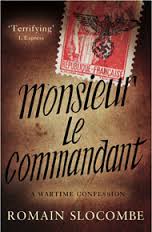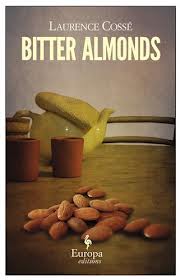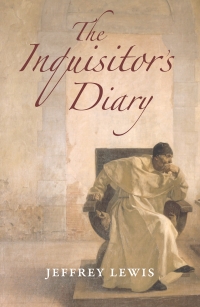I read somewhere that 70% of people who walk into bookshops are browsers. In other words, they simply don’t know what they want. The fact that browsers are open to anything that catches their eye, means that chances are they’ll grab those books with interesting covers. Because, tough as it is, books do get judged by their cover.
So let’s have a look at some examples. But before we go ahead, let me tell you that all of the following books made it to this blog entry, mainly, by the way they look (oh yes, let’s be vain!).

The “I’m so different” cover
These are the covers that stand out because they look different. A great deal of design it’s put into them, they make you smile and therefore have more chances of making it into your shopping basket. These covers are simply beautiful. The latest of these books that came to my attention is a novel called Freshta by Czech writer Petra Procházková.
Remove all the fonts and you’ll be left with a wonderful work of art that could easily have a place in my living room.
If curious to learn more about Freshta visit Stork Press’ website by clicking here.

The” made- into-film” book cover
This is one of the most infuriating marketing strategies ever. A book makes it into the big screen and therefore gets reprinted with a still of the film as cover! Message between the lines? Now that it’s a film, we WILL sell this book.
Marie Antoinette, the film, got released in 2006 and as a result, the cover of this award winning biography was changed to feature a still of Hollywood actress Kirsten Dunst as Marie Antoinette. The 18th century is no where to be seen in this cover, the dominating pink colour makes it look closer to chick lit than to a serious and well researched biography. One word: rubbish.
Leaving anger aside, let’s move on.

The” less is more” cover
How about those covers where less is not necessarily more? Sometimes, simplicity is not effective. A perfect example of incredibly good novels with simple covers are those published by And Other Stories. All their books follow pretty much the same kind of design in an attempt to make a recognisable brand out of their books. I’m not convinced of how effective this could be, having in mind that browser who visits bookshops looking to be winked at.
For example, this cover do not speak to me. It simply doesn’t, and I think it’s is a missed opportunity to grab more readers.

Now, the “less is more” cover is distant cousins of the “image doesn’t match the story” cover.
And for these, I have to use the Spanish edition of Mario Vargas Llosas’ La fiesta del chivo (The Feast of the Goat). The novel is set in the Dominican Republic and its plot revolves around the assassination of the cruel dictator Rafael Trujillo in 1961. Now a look at the cover! What is this! Well, looking at the tiny letters where all the copyright credits are, I found out that this image is part of a fresco by Italian painter Ambrogio Lorenzetti called Allegory to Bad Government, c. 1338. As I scratch my head, I wonder if the publisher thought that Vargas Llosas’ readers are also experts in Medieval Italian art history.

The Sci- fi covers
I must confess here that I am not a science fiction reader but my home is flooded by all sorts of these novels as my husband reads nothing but sci fi. The covers are really fascinating ones, weird and complex.
For instance, check this Peter F. Hamilton cover for The Evolutionary Void. Brilliant! This is a monument to the “what you see is what you get” cover. An incredible amount of detail goes into each one of his best selling books, and I know that the plot never fails to be intriguing, ground breaking and different, just as the cover.

The “I’m a photograph” cover
Another type of covers have photographs at its core. We’ve all seen them as they are a resource that I believe is quite successful as sometimes people relate quicker to a photograph than perhaps an abstract design. A perfect example is the novel The Confidant by French author Hélène Grémillon. Look at it, a beautiful pic. Goes without saying that the story is set in France and it involves two lovers, exactly like the ones in the photograph.
Interestingly, if you have a look at Gallic Books‘ website, you’ll see that all of Guillaume Musso’s covers are photographs? Perhaps a favourite strategy by this independent publisher?
 The Retro Cover
The Retro Cover
We could spend a life time talking about retro covers. Penguin Books being the masters of it, celebrating the designs that stand the test of time and cleverly associating it to no other that their classics. Thumbs up!
But having said that and avoiding the obvious choice, I need to celebrate the cover of Once Upon a Time in England, the second novel by Helen Walsh. A family looking into the distance surrounded by this wall paper kind of design reminding us precisely of one of the years the novel is set in: 1975.
For any book lover, covers are a crucial aspect of our reading experience. I don’t know about you but I’ve read fantastic books with covers so hideous that I feel ashamed of; and I’ve also become a notorious contortionist just to find out what my fellow passenger is reading. The publishing industry invests hours and talent in designing book covers that will sell books but it seems like the e-readers and Kindles are decided to take that from us. For a curious commuter and book cover police like me, it frustrates me enormously not being able to find out what all of those Kindle users are reading, simply because I can’t judge that book by its cover.
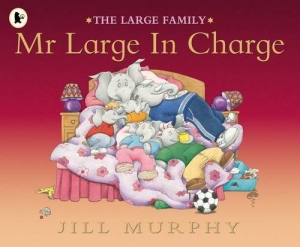 As I read the book to my daughter something started bothering me. And I mean, really bothering me. The story line is the following: Mrs Large wakes up one morning feeling unwell and Mr Large tells her to go back to bed and rest as he will look after the children. In a nutshell, Mr Large is an utterly incompetent father to the point that Mrs Large never gets to rest. But that doesn’t matter because at the end they all snuggle in bed with mum.
As I read the book to my daughter something started bothering me. And I mean, really bothering me. The story line is the following: Mrs Large wakes up one morning feeling unwell and Mr Large tells her to go back to bed and rest as he will look after the children. In a nutshell, Mr Large is an utterly incompetent father to the point that Mrs Large never gets to rest. But that doesn’t matter because at the end they all snuggle in bed with mum.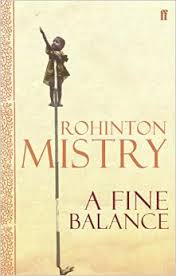 On my last day at work, my wonderful colleagues at Belgravia Books gave me a pile of books that promised to make the wait for baby more bearable and less boring. Well, baby took it’s time and in between cooking and freezing, packing and re packing, going swimming (going floating really) I started a big fat novel called A Fine Balance by Rohinton Mistry.
On my last day at work, my wonderful colleagues at Belgravia Books gave me a pile of books that promised to make the wait for baby more bearable and less boring. Well, baby took it’s time and in between cooking and freezing, packing and re packing, going swimming (going floating really) I started a big fat novel called A Fine Balance by Rohinton Mistry.
